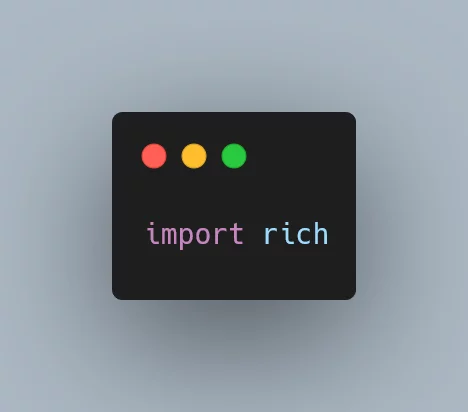
rich
The package rich is a Python package created by Will McGugan.
Honestly, I think it's my favourite 3rd-party package,
and it's something well worth learning:
in a sentence, it enriches your Python experience.
It allows effortless styling of your output, better and more informative error tracebacks, beautiful logging, elegant tables, and many more things. Just take a peek at the docs.
rich is an open-source package that you can find on GitHub,
so you can take a look at its code and learn a ton while doing so.
How to install rich
rich is on PyPI and installing it is straightforward:
python -m pip install richNow I'll show you some of the cool things you can do with rich.
rich.print
Styling your print statements
rich has a function called print that works exactly like the built-in print...
Except it does much more!
With rich's print, you can easily style your output by writing styles within "[]".
Try running this code on your REPL:
from rich import print
print("[red]Hello[/] [green]world[/]!")
print("[underline]Hello world![/]")
print("[black on white]Hello world![/]")Before seeing the result, can you guess what the result will be?
Here is a screenshot for you:

Pretty printing Python objects
The print function from rich also does pretty-printing of your Python objects, by default.
For example, here is the example output from printing locals():
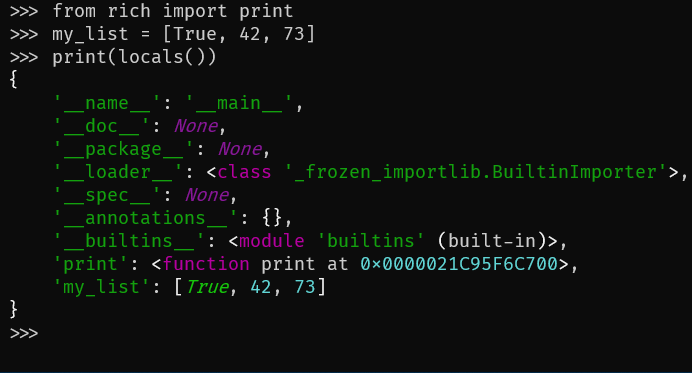
This does syntax highlighting for your Python objects, which is great, because the colours encode information, making it easier for your brain to extract the information it needs.
Persistent highlighting in the REPL
If you enjoy the syntax highlighting of your objects in the REPL, you can make it more “permanent” with the following code:
>>> from rich import pretty
>>> pretty.install()By calling this function, rich is automatically used every time the REPL evaluates something.
Put this together with the function rich.print, and you will have a very colourful REPL!
Try running the following code in the REPL before and after using pretty.install()
(you can just copy and paste it):
def foo():
return "Hello, world!"
foo()
foo
len(foo())Here is a screenshot of the REPL output:

rich.inspect
I hope you are familiar with the built-in help, because if you are, you probably love it.
Then, let me introduce you to rich.inspect, which is like help on strong steroids!
What does inspect do?
Well, it's good to “Inspect any Python object.”...
Except it does so, wonderfully!
Part of the magic of this function is the beautiful colours it uses to inspect the objects you pass it in!
First step to beautiful inspection of all Python objects? Import it!
from rich import inspectNow, I often forget how to use inspect, so I always start by inspecting inspect itself:
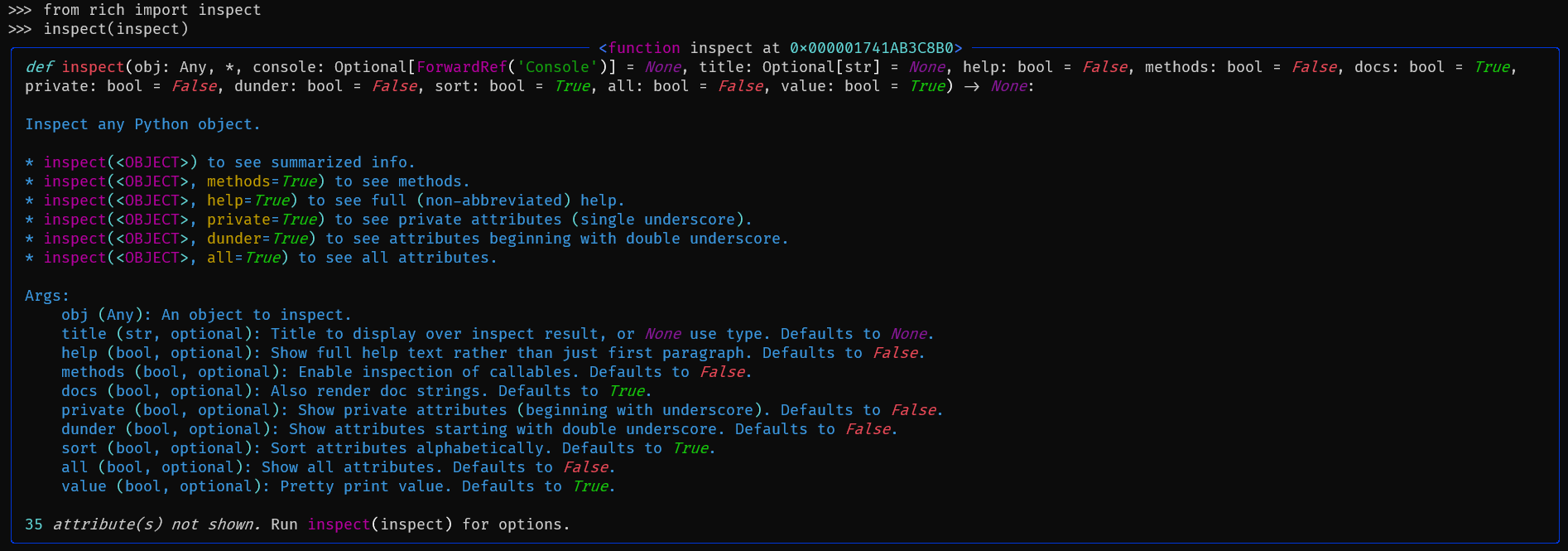
But inspect is really great for anything.
For example, setting help=True is useful to inspect built-ins:
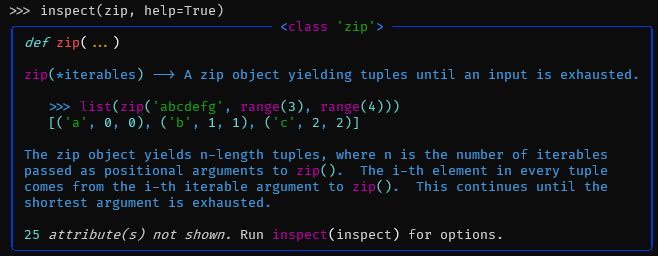
It is also great to inspect instances of custom classes, for example:
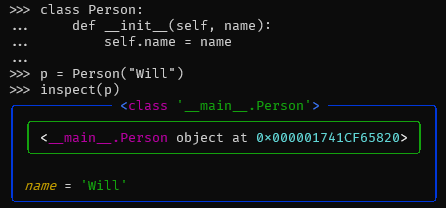
That's it for now! Stay tuned and I'll see you around!
Become a better Python 🐍 developer, drop by drop 💧
Get a daily drop of Python knowledge. A short, effective tip to start writing better Python code: more idiomatic, more effective, more efficient, with fewer bugs. Subscribe here.
